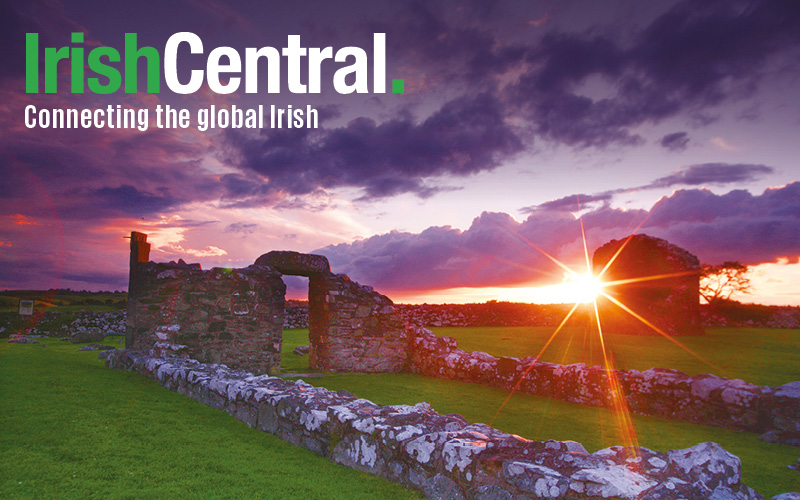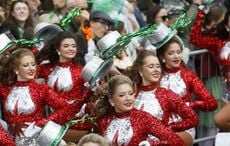Famed Irish poet William Butler Yeats was born in Dublin on June 13, 1865.
Editor’s note: In his black and white photographic exhibition, "Into the Twilight – the Landscape of WB Yeats," Sligo photographer Ciarán McHugh captures the mystical Sligo landscape that inspired Ireland’s Nobel Laureate poet W.B. Yeats. The exhibition first opened for the Yeats centennial at the Hyde Bridge Gallery in March 2015 and was later displayed at Lissadell House and Sligo City Hall.
When asked what inspired the collection, McHugh commented, “Living Under bare Ben Bulben's head puts you right at the heart of all things Yeats. His presence is everywhere. With this collection I aim to capture the landscapes he identified with in a way which evokes this sense of otherworld in writings. As we go about our busy lives we can become detached from the enchanting beauty of our surroundings. Sometimes we need to reset and learn how to look again. I hope this collection of photographs can, in a small way, help people refocus on the familiar landscapes we are immersed in and take a fresh look at the different interconnected worlds around us.”
For the 154th anniversary of Yeats’ birth, we are pleased to share with you a selection of McHugh’s photographs. On McHugh’s website, you can also see a map of the locations in his photographs.
Ireland’s landscape was a catalyst for much of W.B. Yeats’ writings. It is the landscape of myths and legends, symbolism and national identity which is used as a natural backdrop, real or imagined, throughout much of his work.
Only a person who was both deeply passionate about and immersed in their natural surroundings could have composed such an enchanted poem as ‘The Stolen Child.’ The phonetical use of the English pronunciation of Irish place names and their subsequent use in rhythmic structures in his poems give the landscape a magical quality and evoke romantic and sensual imagery. i.e. Sleuth Wood.
Sligo was the ancestral home of Yeats' mother and the county's rich and varied landscape was the place Yeats felt most connected to. This association – both in life and death – is already well documented. The county that was to become synonymous as ‘The Land of Heart's Desire’ colored his childhood thoughts and was to make an enduring impact on all aspects of his life.
A dominant feature of much of Yeats’ writing is his belief that we all inhabit a reality that is made up of two different but interconnected worlds: the one we live in and the world beyond our understanding. This other world is beyond the grasp of most humans and is free of the limitations of our mortal world. It is the world of Faeries, the Good People, the Sidhe, the Tuatha De Danan. It is home to the spirits of the dead, fabled warriors, mythological heroes and ancient pagan gods. It is a world which, over time, we have lost the capacity to see but one which can be revealed if we learn how to look.
Yeats’ verse pays homage to the natural beauty of Ireland’s landscape, but much of the body of his poems evoke this other world. It is his skill as a writer which allows him to guide us from one world to the other and back again by bestowing a mystical sense to real landscapes.
“The world is full of magic things, patiently waiting for our senses to grow sharper.” - W.B. Yeats
If color photography is an attempt to exactly replicate what the eye sees, then black and white is the reverse of this, a form of surrealism where the photograph becomes an interpretation, rather than a literal representation, of the landscape. In essence, it helps nurture the otherworld from the landscape. For me, it was an easy choice to present this collection of photographs as a series of black and white images.
When the color is stripped away the remaining components that make up an image are enhanced. The natural features of the landscape, such as stone, trees, water and mountains become compositional elements made up of light, tone, form, nuance and texture. Similarly, the landscape of Yeats’ poetry is about the sensual, the mystical, the wild and intrigue. Both are more implicit than explicit. Black and white offer us a different world to the one we experience day-to-day as our attention is drawn to what, in color, can sometimes appear insignificant.
Living amongst the breath-taking scenery of Sligo and the West of Ireland, we can on occasion become detached from the enchanting beauty of our surroundings as we go about our busy lives. Sometimes we need to reset and learn how to look again. Yeats himself once commented, “We should make poems on the familiar landscapes we love, not the strange and rare and glittering scenes we wonder at.” I hope this collection of photographs in a small way helps you refocus on the familiar landscapes we are immersed in and take a fresh look at the different interconnected worlds around us.
----
Ciarán McHugh lives in Carney in North Co. Sligo. His photography is focused on the landscapes of the West of Ireland. In 2014 a portfolio of his work was selected by The Irish in Europe Association for inclusion in an exhibition to promote Sligo in the Halles Saint-Gery in Brussels. In 2012 Ciarán collaborated with US author E. Ashley Rooney to produce a book entitled ‘Ireland's Ghosts, Legends, and Lore’. He is also a member of the Made in Sligo craft group.
Visit his website and his Facebook page for more.
* Originally published in June 2016.




Comments